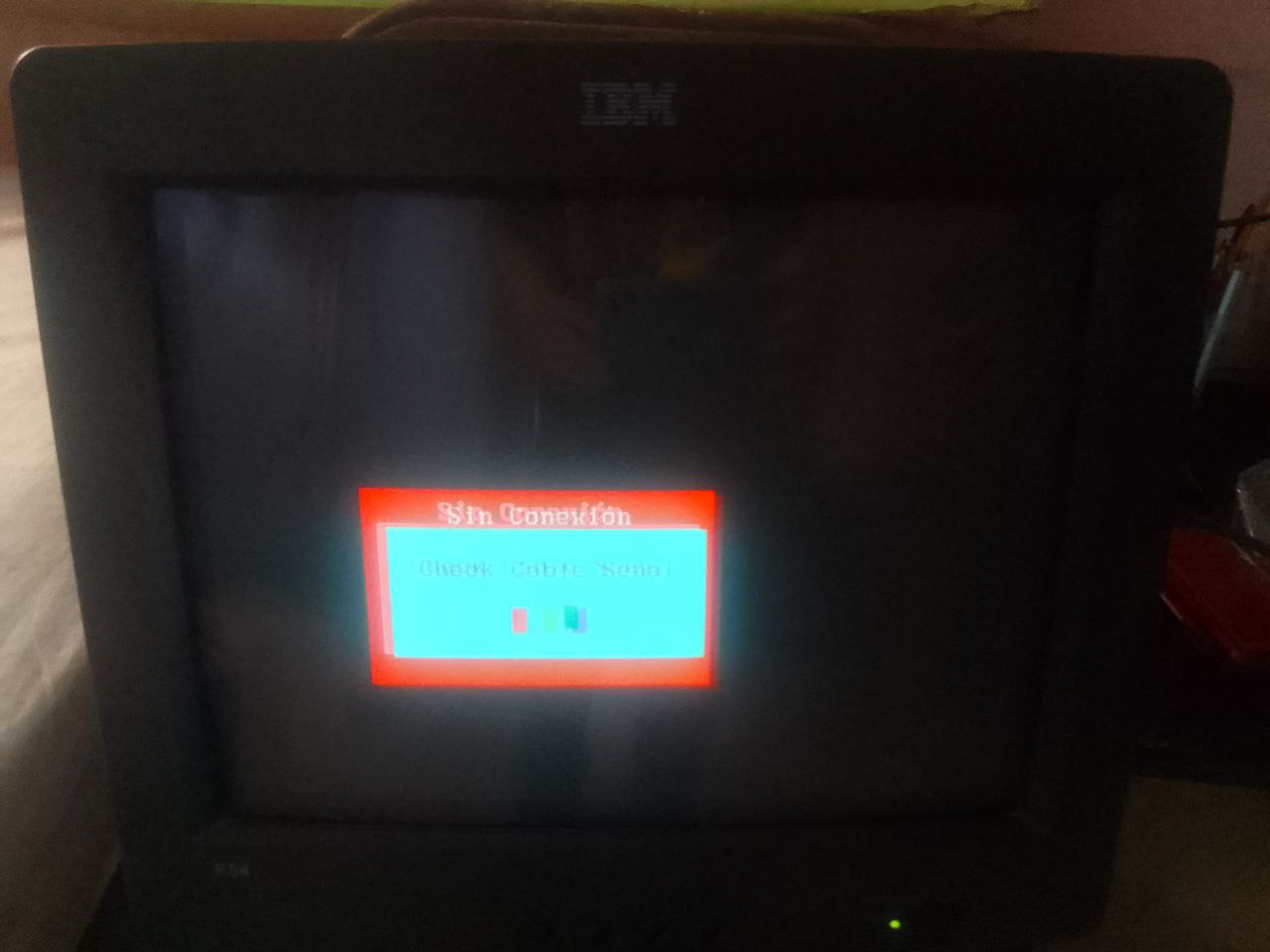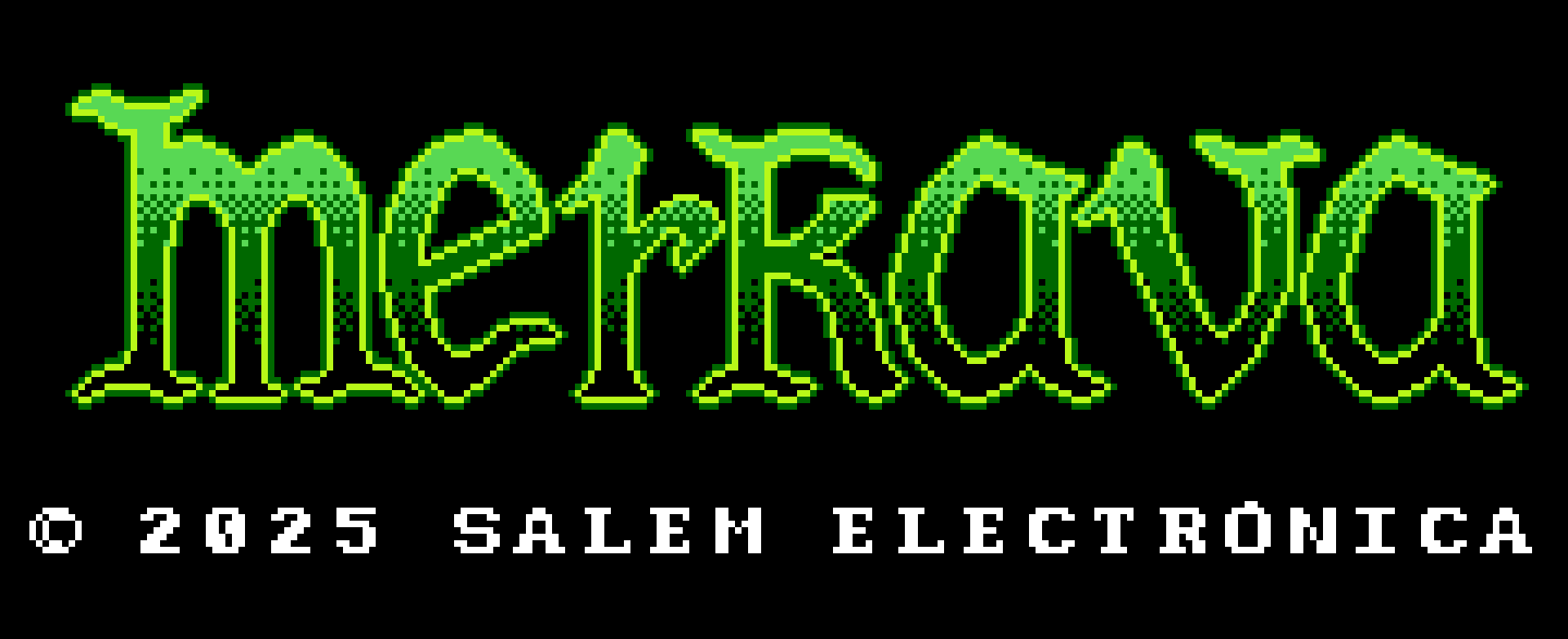The development of Merkava
Development: We began developing this game on Sunday, February 18, 2024. The idea was to make a simple game, and for the design, I took inspiration from the game 小魔女 (Xiao Monv: Magic Girl), but I wanted to add some ideas of my own, I decided to add some elements more commonly seen in ARPGs, such as rotation, parry, sword, magnetic projectiles, enemies keeping their distance, dodging and teleporting during fights, and the fact that each power-up is obtained by completing a stage rather than through drops, thus avoiding the Gradius syndrome.
Another reason I decided that power-ups should be obtained by completing a stage is that, since they can’t be lost once acquired, it allows me to design more varied compositions (hordes and challenges) that rely on a specific power-up, without the risk that the player might have lost it beforehand.
During development, we had support from friends like Yiku1707, who gifted us a CRT monitor to test things and gave us moral support.

The game is about Meirav, a Jewish girl chosen to fight the angel of the apocalypse and save the world. The title of the game is inspired by The Sacred Armour of Antiriad, a great game that many consider the first non-linear platformer. Both games, Antiriad and Merkava, are about a human clad in armour saving humanity.
Power-Ups: The idea behind each weapon was for each one to be useful in a different situation, so that none would become useless after obtaining others.
The laser is good for taking out low-health enemies, especially when they come in groups or in situations where aiming is difficult. The charged projectile is useful against groups of tougher enemies, since it doesn’t disappear on contact and can clear everything in its path. It’s also a good idea to charge it when the screen is clear, so it’s ready when an enemy appears. The sword is useful against enemies already on screen when it’s convenient to fight them up close. The “normal projectile” is useful against enemies already on screen when it’s better to fight them from a distance. The parry starts as a purely defensive tool, helping you make space between projectiles, but eventually it gets a lot of offensive use as well.
Stages: I wanted Merkava to push players to eliminate enemies more actively, which is why they take a long time to leave the screen — this forces you to take them out quickly before more show up (just like in Bubble Bobble).
Since I have very few gameplay elements (enemies), the game’s composition (enemy combinations in hordes and challenges) is quite limited. To add variety, I decided that each stage would have a slightly different logic — meaning the play style changes a bit from one stage to another.
Stage 1 is the most similar to a classic arcade shoot ’em up. You can only fire common projectiles, and the enemies are more of a threat due to their numbers than their skills.
Stage 2 shifts the gameplay a bit, to something between classic shmups and games like Bubble Bobble, where you have to eleminate enemies quickly. In this stage, enemies are tougher and have better attack capabilities, which gives more weight to each horde. This allows the game to start being structured more clearly by hordes rather than one-by-one enemies. The game begins to punish players more for failing to eliminate enemies quickly.
Stage 3 once again changes the gameplay a bit. It introduces a layer of randomly generated enemies throughout the stage on top of the regular enemy hordes. This keeps you constantly alert and prevents you from letting your guard down. It also allows for more space between hordes, since if the player eliminates a horde too quickly, these random enemies ensure the game doesn’t feel empty while waiting for the next one. This makes the game more dynamic and starts demanding evasion, not just elimination.
Stage 4 changes the gameplay one last time. This time, you gain the ability to rotate, and enemies can now appear from any angle. The boss takes full advantage of this mechanic, featuring gameplay elements closer to something like Titan Souls.
Despite this, Merkava is primarily a boss-focused game; it puts more emphasis on the bosses than on the stage hordes.
I designed the final boss of Merkava inspired by The Soul from Titan Souls and Gate from Mega Man X6.
The stage 4 boss is very confident after building her impenetrable armor. This is reflected in the fight, as she makes no attempt to dodge Meirav’s attacks, believing none of them can harm her. The weight of this armour, which makes her nearly invulnerable, is also what causes her reduced mobility — making her move and attack slowly, and preventing her from performing certain moves and skills.
Get Merkava: The Sacred Armour of Meirav
Merkava: The Sacred Armour of Meirav
Cute and lightweight shmup with some ARPG elements
| Status | Released |
| Author | Salem Electronica |
| Genre | Shooter |
| Tags | 2D, 8-Bit, Godot, No AI, Pixel Art, Retro, Shoot 'Em Up, Top-Down, Top down shooter |
| Languages | English |
